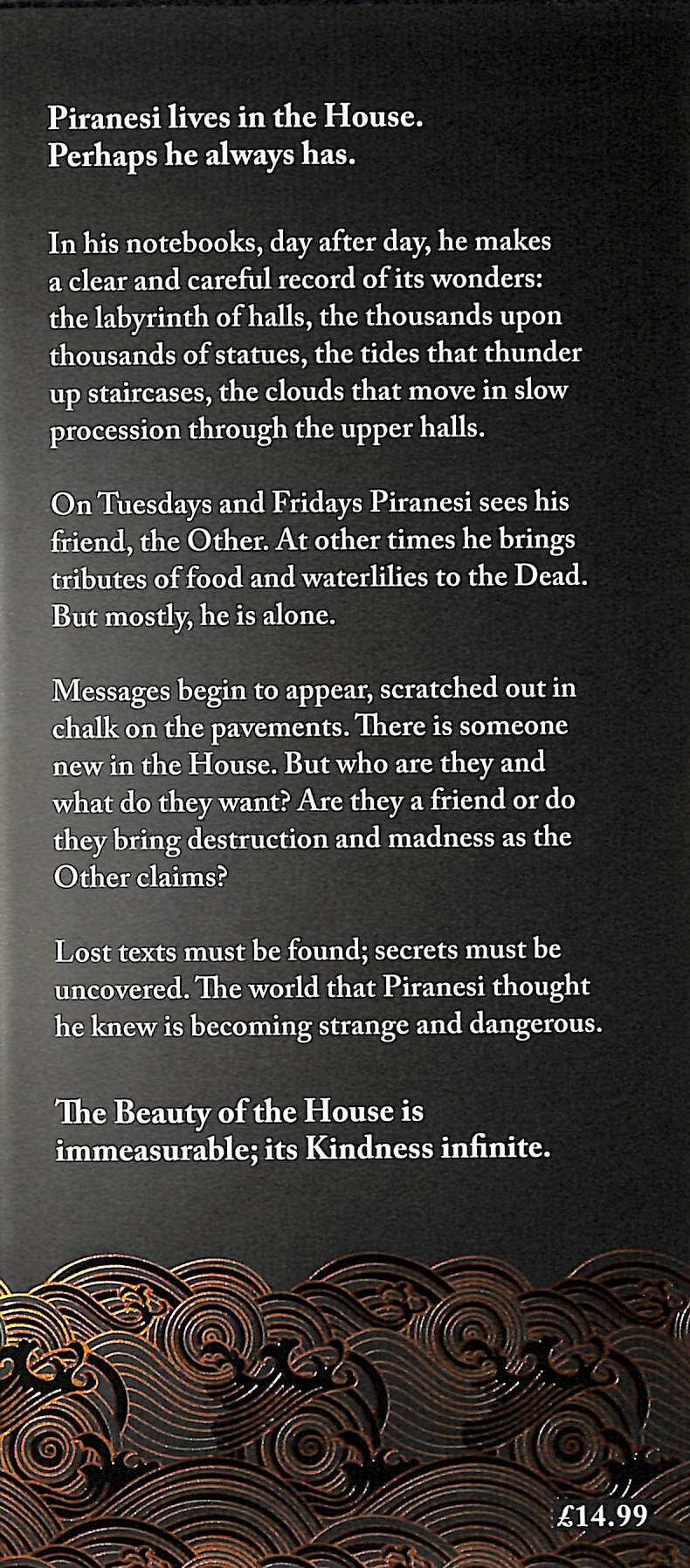


I loved JONATHAN STRANGE AND MR NORRELL – it’s a wonderful, mesmerising book, that creates a rich and plausible world, where “our” history has been nudged ever-so-slightly sideways, and Regency England is resident to magicians and magic, and plagued by capricious fairies and strange but very real folklore.

To find that her new book, PIRANESI, has been released, certainly came as a shock, but a very welcome one. Released with a relatively short build-up (I only found out that a book was due maybe six or seven weeks ago), it has come as a wonderful surprise, and a book I will certainly look forward to reading.Ĭlarke released her first book proper, JONATHAN STRANGE AND MR NORRELL, a surprisingly long time ago now – some fifteen years or so, and then, after the excitement that that book caused, she retreated from the public eye. Lavishly descriptive, charming, heartbreaking and imbued with a magic that will be familiar to Clarke’s devoted readers, Piranesi will satisfy lovers of Jonathan Strange and win her many new fans.Amongst the flurry of books released in September, I note with interest a new book from Susanna Clarke. With their neoclassical verve, certain passages recall ancient philosophy, but readers may also see connections between Piranesi’s account and the unique isolation of a confined life-whether as a result of a mandatory lockdown during a global pandemic, or perhaps due to the limitations caused by a chronic illness, such as Clarke’s own chronic fatigue syndrome. But at one-third as many pages, Piranesi is more allegorical than epic in scope. Piranesi hits many of the same pleasure points as Jonathan Strange-Clarke’s dazzling feats of world building, for one. Stripping this mystery back layer by layer is a magical way to spend an afternoon, reading narrative motifs like runes and studying Piranesi’s journals as if they are the religious texts they resemble. The reader reflexively mirrors Piranesi in his quest to interpret the clues revealed to him by his beloved World. From this point, the novel is almost impossible to put down. The Other is obsessed with finding and “freeing the Great and Secret Knowledge from whatever holds it captive in the World and to transfer it to ourselves,” and the guileless and devoted Piranesi has been his cheerful collaborator.īut just as Piranesi begins to lose faith in the Knowledge, a discovery leads him to question his own past. Twice a week, he meets with the Other, the only living person Piranesi has ever known. Piranesi spends his days fishing, drying seaweed to burn for warmth, tracking the tides and cataloging the features of each room of the House in his journals. The House, composed of hundreds of huge rooms filled with statues and wild birds and containing an ocean’s four tides, is so vast it may as well be infinite. “It is my belief,” writes Piranesi, the protagonist of Susanna Clarke’s new novel of the same name, “that the World (or, if you will, the House, since the two are for practical purposes identical) wishes an Inhabitant for Itself to be a witness to its Beauty and the recipient of its Mercies.” Clarke’s first novel since 2004’s wildly successful and critically acclaimed Jonathan Strange & Mr Norrell, Piranesi centers on a strange, haunting world and features a main character whose earnest goodwill is piercingly endearing.


 0 kommentar(er)
0 kommentar(er)
